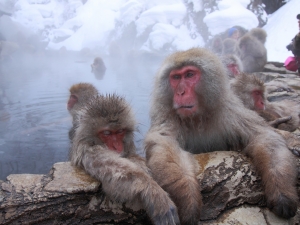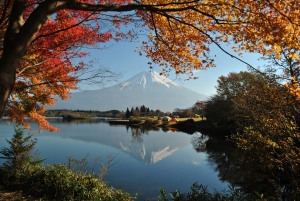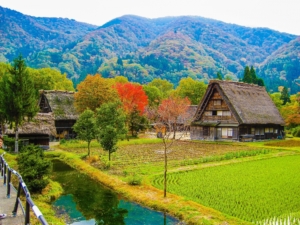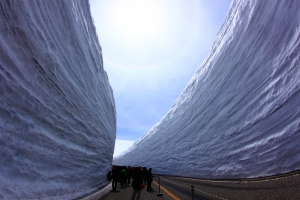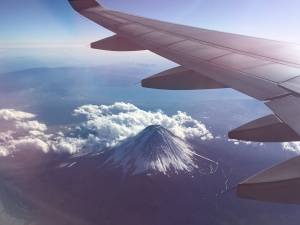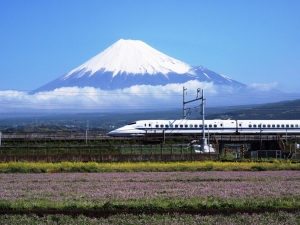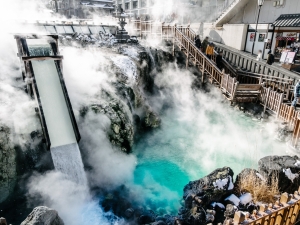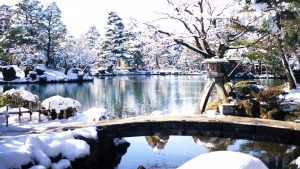Japan’s Central Honshu has many places to explore. With this itinerary, you’ll discover the lesser traveled trails. Travel to the below places and see much of Japan’s countryside culture and experience its traditions!
Day 1 Tokyo – Hakone
Day 2 Hakone
Day 3 Hakone – Nagoya
Day 4 Nagoya – Magome
Day 5 Magome – Tsumago
Day 6 Tsumago – Narai – Matsumoto
Day 7 Matsumoto – Azumino
Day 8 Matsumoto – Kamikochi
Day 9 Kamikochi – Takayama
Day 10 Takayama – Shirakawa-go
Day 10 Shirakawa-go – Kanazawa
Day 11 Kanazawa
Day 12 Kanazawa – Nagano – Snow Monkey Park
Day 13 Nagano – Tokyo
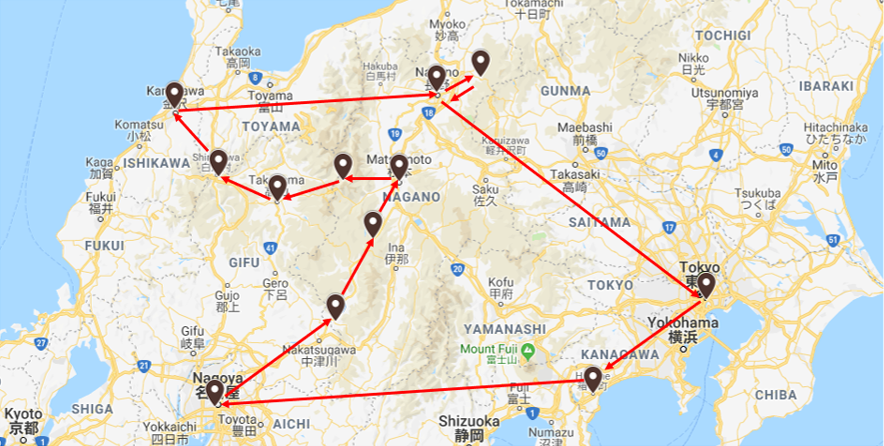
・・・
We recommend staying in Hakone, a onsen town and nature reserve less than 2 hours from Tokyo, for 2 days, just to spread out the chances of seeing Mount Fuji. Generally, the colder the weather, the better you’ll see Fuji. Hakone has more than enough interesting places to see, so even if there’s no clear view over the mountain, you’ll still have plenty to explore such as local hot springs, museums, and more.
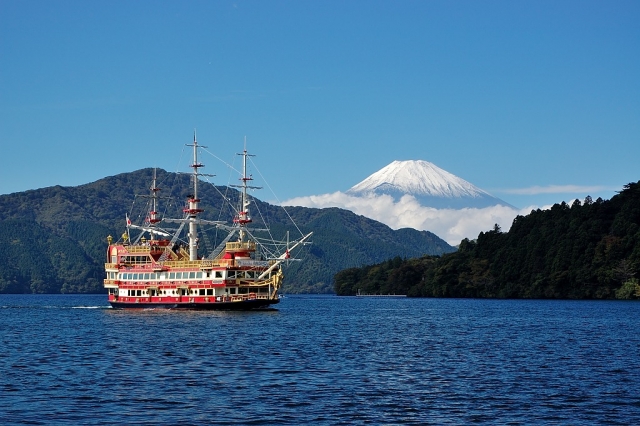
One of the best places to see Mt. Fuji from is Lake Ashi, the biggest and most central lake in the Hakone Nature Reserve. Take a seat aboard one of the famous pirate ships and hopefully take a peak at Japan’s most famous mountain. Near the lake is a cable-car ride which will take you to the top of one of the surrounding mountains. From here, the view over Fuji and the Hakone nature reserve is spectacular.
Nagoya is the third largest city of Japan and has a multitude of interesting activities and beautiful sites. The most famous site in Nagoya is without the shadow of a doubt its castle. This castle is especially beautiful during cherry blossom season, as many of the trees in the castle park are sakura trees.
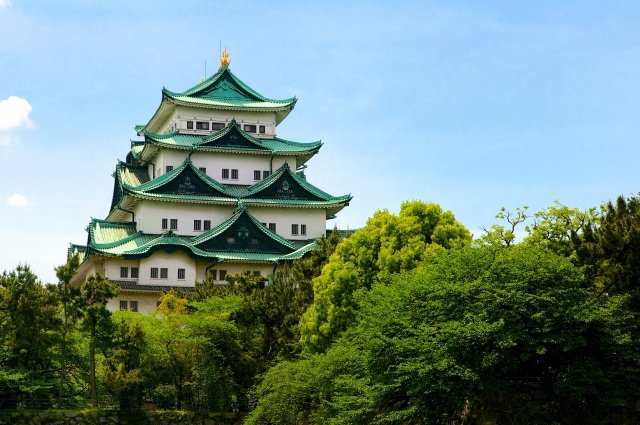
Besides the castle, the city has some of the most excellent museums in the country, one of the most influential shrines, modern and traditional shopping areas, and more.
Day 4 & 5: Nagoya → Nakasendo Hike between Magome & Tsumago
Less than 2 hours from Nagoya a very different experience awaits. Several centuries ago, merchants and nobles walked the Nakasendo Walk between Tokyo – the feudal lord’s capital city – and Kyoto – the imperial capital city. Parts of this route still exist, and the best preserved route is between the post town cities of Tsumago and Magome. Here people stopped to refuel themselves and trade goods.

The 8km walk between the two towns takes you through valleys and historic towns, past rivers and ancient trees. The walk is lovely and not very taxing (there are some uphill bits though), and the towns are reminiscent of centuries past. Walk along the cobble-stone streets past farm houses, eateries, and museums.
The next day, we recommend traveling from Tsumago to Matsumoto. On the way to Matsumoto, there’s 1 stopover that is worth getting off the train for.
Day 6 & 7: Tsumago → Narai → Matsumoto & Azumino
The stopover in-between Tsumago and Matsumoto is Narai, another post town. This town is known as the town with 1000 houses, and is one of the most beautiful Edo towns in the area. From there, Matsumoto City is only 30 minutes away.
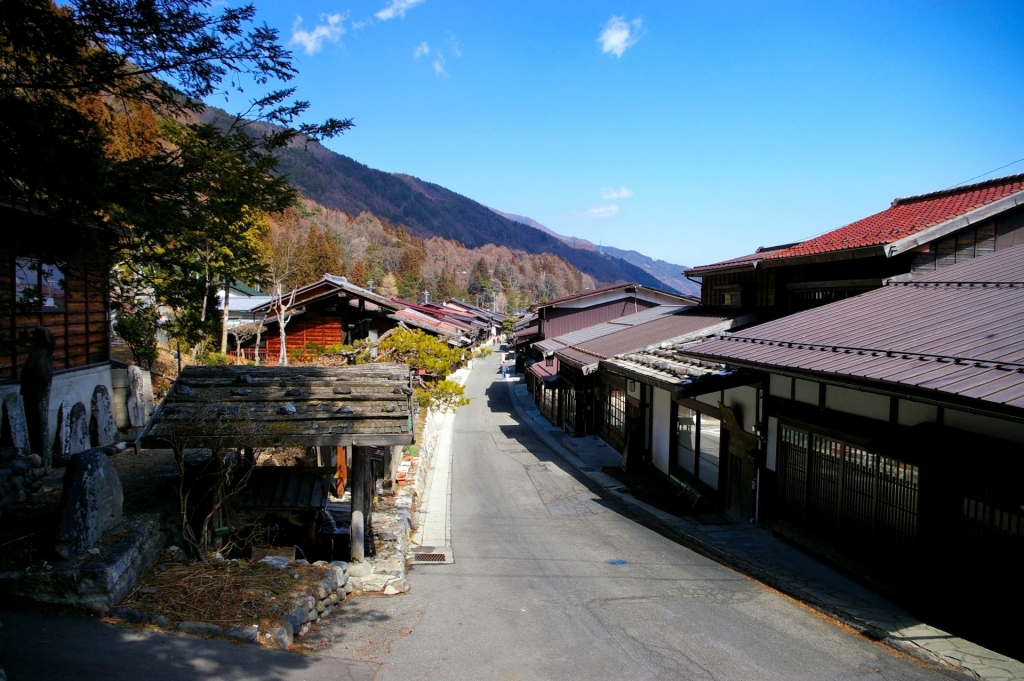
Matsumoto is a small city, and can easily be explored in a day. The biggest site of Matsumoto is its castle. This castle is one of the 3 Most Beautiful Castles in Japan and one of the only 12 remaining original castles.
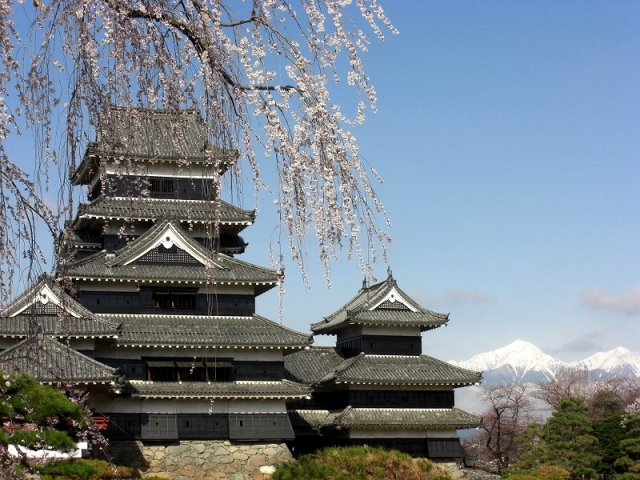
If you want to go a little further and see a little more of the area, you can rent a bicycle and ride past rice paddies and farm houses to Azumino. Azumino is most famous for the Daio Wasabi Farm. Explore the farm – the largest in Japan – and take in the scenery of clear water, wasabi plants, and massive mountains.
Kamikochi is one of Japan’s most well-known nature reserves, with clear-blue waters, incredibly tall peaks, and green all around. It’s like a breath of fresh air after Japan’s big, busy cities. Here you can choose to do things the nitty gritty way (i.e. go camping) or you can just walk one of the many hiking paths.
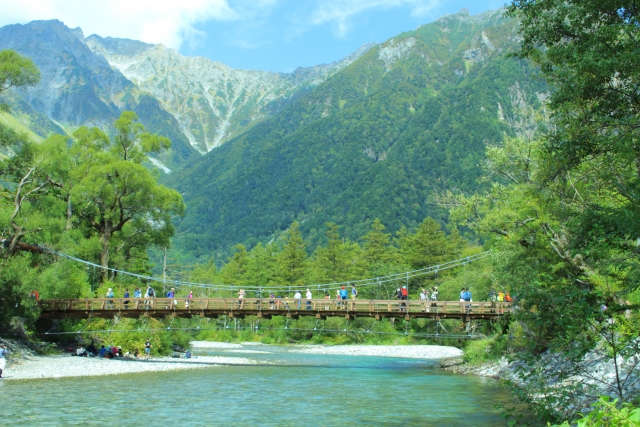
For adventurers, there are many hiking paths going up the massive mountains framing the valley of Kamikochi. There are multiple 1 and 2-day hikes, with mountain huts and delicious mountain food awaiting you at the top of the peak. One thing to note is that these mountain huts are often not frequented by foreign travelers, so English might be hard to come by, and there will be a few stares thrown your way.
Having had your fill of fresh, clean air, get on the bus bound for Hirayu Onsen. Transfer buses at this onsen town and take a seat for 40 more minutes. Then you’ll have arrived at Takayama. While at Takayama, make sure not to miss the morning market. This is a favorite gathering place of locals looking for seasonal fresh fruit and veggies (and gossip). Wander around the stalls, look and taste the local delicacies, and marvel at the way the elderly men and women run around.
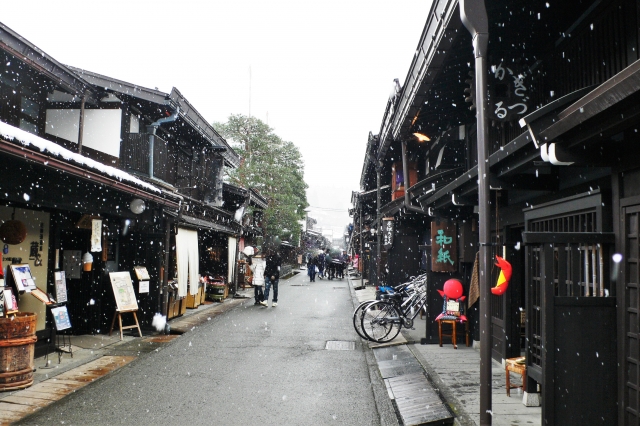
Day 10: Takayama – Shirakawa-go
If you’re feeling up for an extra activity, travel to Shirakawa-go, one of Japan’s and UNESCO’s treasures. The town is especially famous for its winter scenery, when the heavy snow is thickly packed on top of the interlaced, steep roofs. The town is beautiful at any season though, with the traditional houses surrounded by towering mountains a sight for sore eyes.
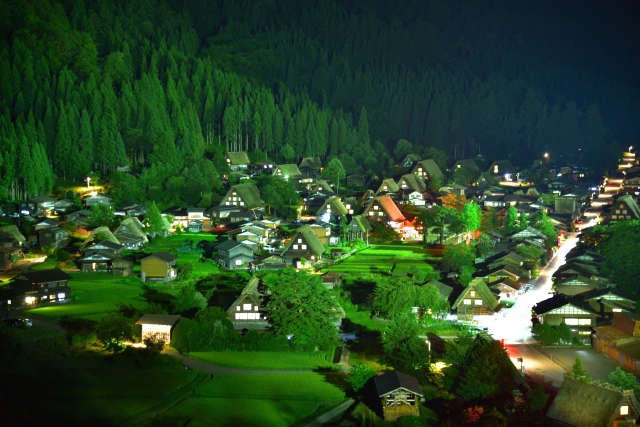
Day 11 & 12: Shirakawa-go → Kanazawa
Kanazawa is one of the pearls of Central Honshu. Still relatively undiscovered by foreign travelers, Kanazawa has both historic and contemporary gems. The undisputed bestseller of Kanazawa is the Kenroku-en Garden, one of the most beautiful gardens in the country and a lovely example of classic Japanese gardens.

Other than the garden, the samurai and geisha districts are worth a visit, as well as the Fish Market, especially for crab lovers. Here you can find freshly prepared snow crabs and other seafood of the highest quality.
Day 13: Kanazawa → The Snow Monkey Park
Travel from Kanazawa to JR Nagano Station. From JR Nagano Station, there is one more transfer to do. Travel to the heart of the countryside of Nagano Prefecture, to the Snow Monkey area. Walk a forest trail to the Jigokudani Monkey Park and see the world-famous Japanese macaques lounging in the hot spring, playing around, and relaxing in their park. For the night, find a ryokan in one of the onsen towns of Yudanaka or Shibu Onsen and relax while bathing in one of the numerous hot spring baths around.
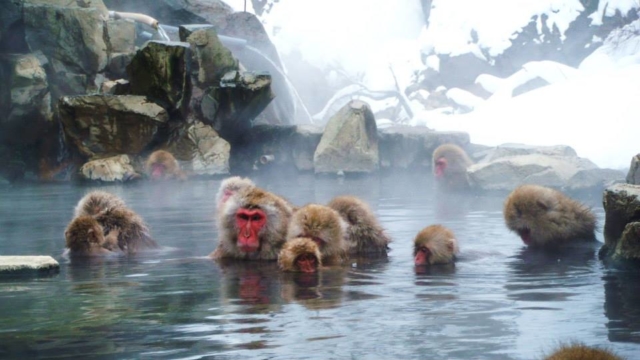
For tours to the Snow Monkey Park, please see here for more information.
Day 14: Snow Monkey Park → Nagano → Tokyo
The next day, return to Nagano Station and explore the Zenko-ji Temple, one of Japan’s most famous temple complexes. The temple is the heart of the city and leading up to the temple is a long street with interesting souvenir shops and cafes. Learn all about the temple and enjoy the tranquil atmosphere before getting back on the Hokuriku Shinkansen to Tokyo, Japan’s capital.

・・・
If you are looking for assistance
If this is an itinerary you are interested in and you’d like help in getting you ready for the road, we can provide a self-guided tour package, complete with hotels, ryokans, detailed transportation information, and sightseeing lists.
Contact us at gettingaroundjapan@machinovate.com for more information.


